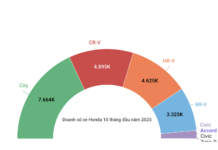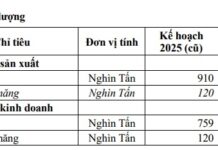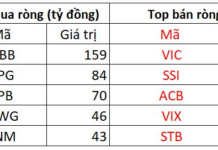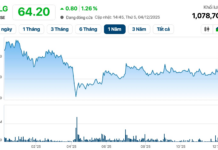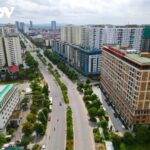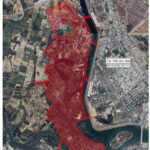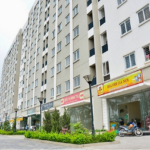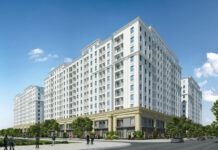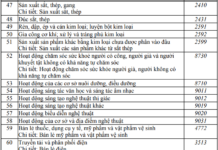## Affordable Housing: Overcoming Challenges for a Brighter Future

Experts at the talk show hosted by Hoang Quan Group on the morning of November 17
|
Are affordable housing prices truly affordable?
Kicking off the talk show, Chairman of Hoang Quan Group, Mr. Truong Anh Tuan, shared that his group, like many other affordable housing developers, utilizes diverse capital sources and offers a range of products, including industrial parks, luxury residences, commercial properties, and affordable homes. However, over 50% of their focus remains on developing affordable housing.
Mr. Tuan highlighted three crucial factors for individuals to be able to purchase affordable housing. Firstly, the government’s policies and mechanisms are currently very favorable. Secondly, there is a support package of 120,000 billion VND in loans, and bank interest rates are also at a low level. Lastly, and most importantly, individuals need to save and work harder. If one can manage their finances effectively, acquiring an affordable home is not as challenging as it may seem.
“Overall, compared to inflation and commercial projects, affordable housing prices have never been more affordable than they are now,” emphasized Mr. Tuan.

Chairman of Hoang Quan Group, Mr. Truong Anh Tuan
|
Echoing this sentiment, Dr. Can Van Luc, an economist and member of the National Financial and Monetary Policy Advisory Council, stated that developing affordable housing requires a collaborative effort from four key stakeholders. Firstly, the government, including central and local authorities, needs to take care of five aspects: planning and strategy, land funds, social infrastructure (schools, hospitals, transportation, etc.), accurate assessment of local needs, and confirmation of procedures related to housing and income. Secondly, banks play a role as the government provides capital for affordable housing loans through them. However, it is essential to supplement these funds with additional sources from local funds.
Thirdly, investors need to allocate capital, pay attention to the affordable housing ecosystem, construction quality, and coordinate with local authorities to assess and determine whether the housing should be for rent or sale from the outset. Lastly, individuals must navigate the procedures and confirm their eligibility for renting or purchasing affordable housing. They also need to save and use financial leverage appropriately.
Dr. Luc also identified six main challenges faced by affordable housing initiatives over the years. These include difficulties with mechanisms, policies, procedures, and implementation; capital sources; planning and land funds; the 10% profit limit on affordable housing projects; differing views on the procedures for purchasing or renting affordable housing; and other issues such as complex inspections and limited data and information.
Despite these challenges, Dr. Luc pointed out three crucial documents that have supported and facilitated the resolution of affordable housing deployment challenges. These are Decision 2161/QD-TTg, dated December 22, 2021, approving the National Housing Development Strategy for the period of 2021-2030, with a vision towards 2045; Resolution 33/2023/NQ-CP, dated March 11, 2023, on solutions to unblock and promote the healthy, sustainable development of the real estate market; and Directive 34/CT-TW, dated May 24, 2024, on strengthening the Party’s leadership in developing social housing in the new situation.
In terms of legal developments, Dr. Luc noted an important change regarding eligible investors for affordable housing projects. Besides typical enterprises, the Vietnam General Confederation of Labor is now permitted to be an investor, with two conditions: they can only construct affordable housing within industrial parks, and the housing must be for rent, not for sale.
Additionally, the new law introduces several supportive policies. It expands the eligible beneficiaries of affordable housing in two ways. Firstly, enterprises in industrial parks are now allowed to purchase affordable housing. Secondly, the income limit for eligible buyers has been increased to a maximum of 15 million VND per month (from the previous limit of 11 million VND). For the first five years, buyers can only resell their affordable homes to the developer or other eligible beneficiaries at the initial purchase price. After this period, they can sell at market prices. Developers and investors, however, must wait for ten years before selling.
Regarding land funds, Dr. Luc explained that instead of mandating that 20% of land in commercial housing projects be allocated for affordable housing, developers can now opt to pay a fee. He considered this a flexible mechanism. On the topic of the 10% profit limit, he shared that affordable housing developers are now entitled to multiple incentives, including exemptions from land rent and land use fees.
Furthermore, Dr. Luc is currently proposing to the government and the Ministry of Construction to consider certain aspects, such as whether to set a price ceiling. He argued that leaving pricing to the discretion of enterprises could result in significant variations and purchasing challenges. He also suggested adjusting income limits according to the region.
In relation to the target of completing one million affordable housing units by 2030, from 2021 to the end of Q3/2024, only 79 projects with 42,414 units (equivalent to 4% of the plan) have been completed. Additionally, 131 projects with 111,687 units have been started, and 412 projects with 411,076 units have been approved for investment.
Regarding the 120,000 billion VND loan package for affordable housing, the disbursed amount as of Q3/2024 was a modest 1,783 billion VND, accounting for only 1.5%.
Dr. Luc emphasized that even if the target of one million affordable housing units is achieved by 2030, it would only meet 42% of the demand. This highlights the significant potential for further development in this sector.
Have the bottlenecks been addressed with the new law?
Mr. Ha Quang Hung, Deputy Director of the Housing and Real Estate Market Management Department, Ministry of Construction, explained that Vietnam currently has two main policy streams. The first stream pertains to commercial housing, which follows commercial mechanisms for individuals who can buy, sell, and take care of their own housing needs. The second stream involves social housing policies aimed at low-income individuals who struggle to secure housing without government support. This support can be indirect, through enterprises developing affordable housing projects, or direct, through subsidies for eligible buyers, renters, or rent-to-buyers.
These policies were first implemented in the 2005 Housing Law. They were later elevated by Resolution No. 18 in 2009, which included three decisions: No. 65, 66, and 67, focusing on constructing housing for low-income urban residents, housing for industrial park workers, and dormitories for university and college students, respectively. In 2015, a more comprehensive social housing policy was introduced in the Housing Law, which was further amended and supplemented in the 2023 Housing Law.
On April 3, 2023, the Prime Minister issued Decision 338 on the project to invest in social housing development from now until 2030. This decision assigns specific targets to local authorities, outlining the number of social housing units each locality must provide to ensure the goal is met.
The 2014 Housing Law specified that beneficiaries of social housing in urban areas were limited to urban residents. However, recognizing that many individuals living in peri-urban areas are effectively urban residents, the latest Housing Law allows local authorities to include low-income households in these areas as eligible beneficiaries of social housing in urban centers.
According to Dr. Nguyen Van Dinh, Chairman of the Vietnam Real Estate Brokers Association (VARS), developing affordable housing used to be challenging due to significant bottlenecks in five key areas: land funds, procedures, mechanisms, capital, and market output. However, the recent legal changes have largely addressed these issues.
Regarding procedures, the new regulations have drastically reduced and streamlined approval processes, especially eliminating overlapping approval stages. On mechanisms, previous concerns about ensuring the interests and rights of developers have been largely removed, making enterprises more willing to participate. In terms of capital, the government has taken decisive action, with the State Bank also contributing through the 120,000 billion VND package, which has now increased to over 140,000 billion VND. Nevertheless, there are still some concerns about interest rates, especially for buyers with limited repayment capacity and narrow income margins.
When it comes to market output, the policies have significantly expanded the eligible beneficiaries to include civil servants, public employees, industrial park workers, and laborers. Dr. Dinh stated that these four areas have been fundamentally addressed.
However, land funds remain a challenge, and the government’s involvement and local authorities’ cooperation are crucial. While the policies are favorable and suitable for the majority, some enterprises within the association still face difficulties in accessing land funds. The behavior of local authorities can create bottlenecks, and there is a need for clearer guidelines and stronger government mandates for local responsibilities.
“In the short term, we need to accelerate and strengthen policy implementation. But in the long term, state agencies must play a leading role in developing affordable housing, especially in land allocation and capital provision. With government direction, procedures will be simplified, and contractors will be engaged as service providers. We also hope to see a stronger focus on rental housing, as most social housing projects are currently for sale, excluding some individuals who cannot access them,” shared Dr. Dinh.
The Great Migration: Relocating 2,000 Foreign Nationals from Social Housing in Bac Ninh and Bac Giang
As of now, according to preliminary statistics, nearly 2,000 foreign nationals have been relocated from social housing projects in the provinces of Bac Ninh and Bac Giang. This development underscores the dynamic nature of Vietnam’s housing landscape and the evolving demographics of these thriving provinces.
Why Are Interest Rates Low, Yet Social Housing Credit Disbursement Rates Still Lagging?
The financial sector, in its role of providing capital for social housing projects and personal home loans, has effectively implemented preferential credit policies. With tailored programs and solutions, the banking industry continues to facilitate access to much-needed funds in this crucial sector.



